9090 AN INTERESTING LATE REGENCY CARVED GILTWOOD MIRROR SURMOUNTED BY A CARVED HERON RETAINING ITS ORIGINAL GILDING AND MIRROR PLATES English. Circa 1820. Measurements: Height: 80 1/4″ (204cm); Width: 46 1/2″ (118.5cm); Depth: 4 3/4″ (12cm).
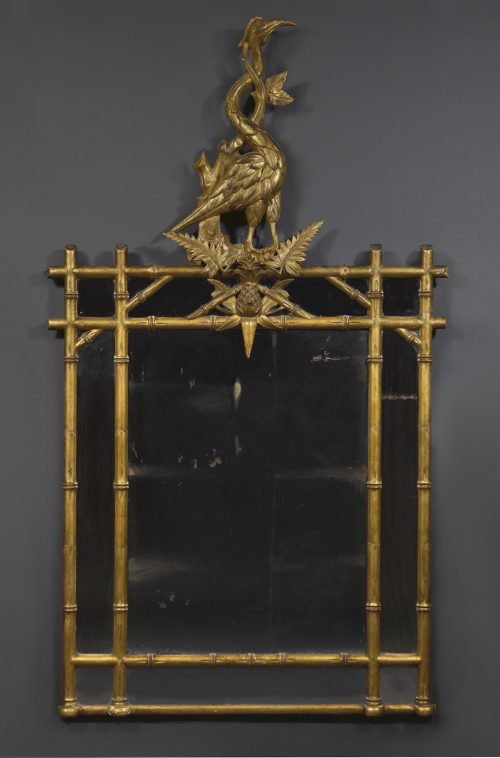
Research
Of giltwood. The whole surmounted by a carved giltwood heron surrounded by foliage and above a carved pineapple, the rectangular frame carved as faux bamboo.
The vogue for Chinese-inspired interiors in late-18th and early 19th century England was revived and fostered under the patronage of the Prince of Wales, later George IV, who executed a small number of royal interiors in the chinoiserie taste, beginning with the lavish Chinese drawing room created in 1790 at the Prince’s London residence, Carlton House, and followed in 1801 by the one of the Regency’s most remarkable buildings, the Royal Pavilion, Brighton.
The Pavilion was initially built by Henry Holland and decorated by many of the leading craftsmen of the day, such as Frederick Crace and Bailey & Saunders, who were given free reign to create some of the most imaginative items ever to be made in the genre. Trompe l’oeil decoration, such as painted views and animals abounded, and faux bamboo furniture found throughout the residence formed part of this playful scheme.1
The simulated bamboo design of the present mirror is reminiscent of the Pavilion’s fantastical chinoiserie furniture. It is surmounted by a heron, which was representative of longevity in the Far East. The heron stands above the equally auspicious pineapple, a symbol of friendship and hospitality. It had been a popular motif since the chinoiserie of the Rococo and “was likely a carryover from earlier representations from the baroque period that had connected picking pineapples to one of the Chinese emperor’s leisure activities.”2
The example of the Price Regent, and the group of culturally sophisticated aristocrats that surrounded him, led to numerous commissions in the Chinoiserie taste, including the Earl of Jersey’s Middleton Park. The mania for chinoiserie and the exotic was a peculiarly English phenomenon in the early 19th century, and it is as part of such an opulent chinoiserie interior in a grand country residence that the present mirror was undoubtedly created.
Footnotes:
- J. Dinkel, The Royal Pavilion, Brighton, London, Philip Wilson, 1983, p. 18, 34.
- Pagani, Catherine. “Eastern Magnificence & European Ingenuity”: Clocks of Late Imperial China. Ann Arbor ; Great Britain: University of Michigan Press, 2001. 131.
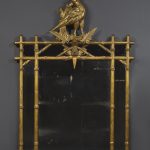
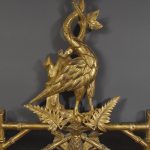
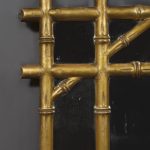
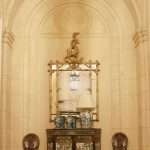
Comments are closed.